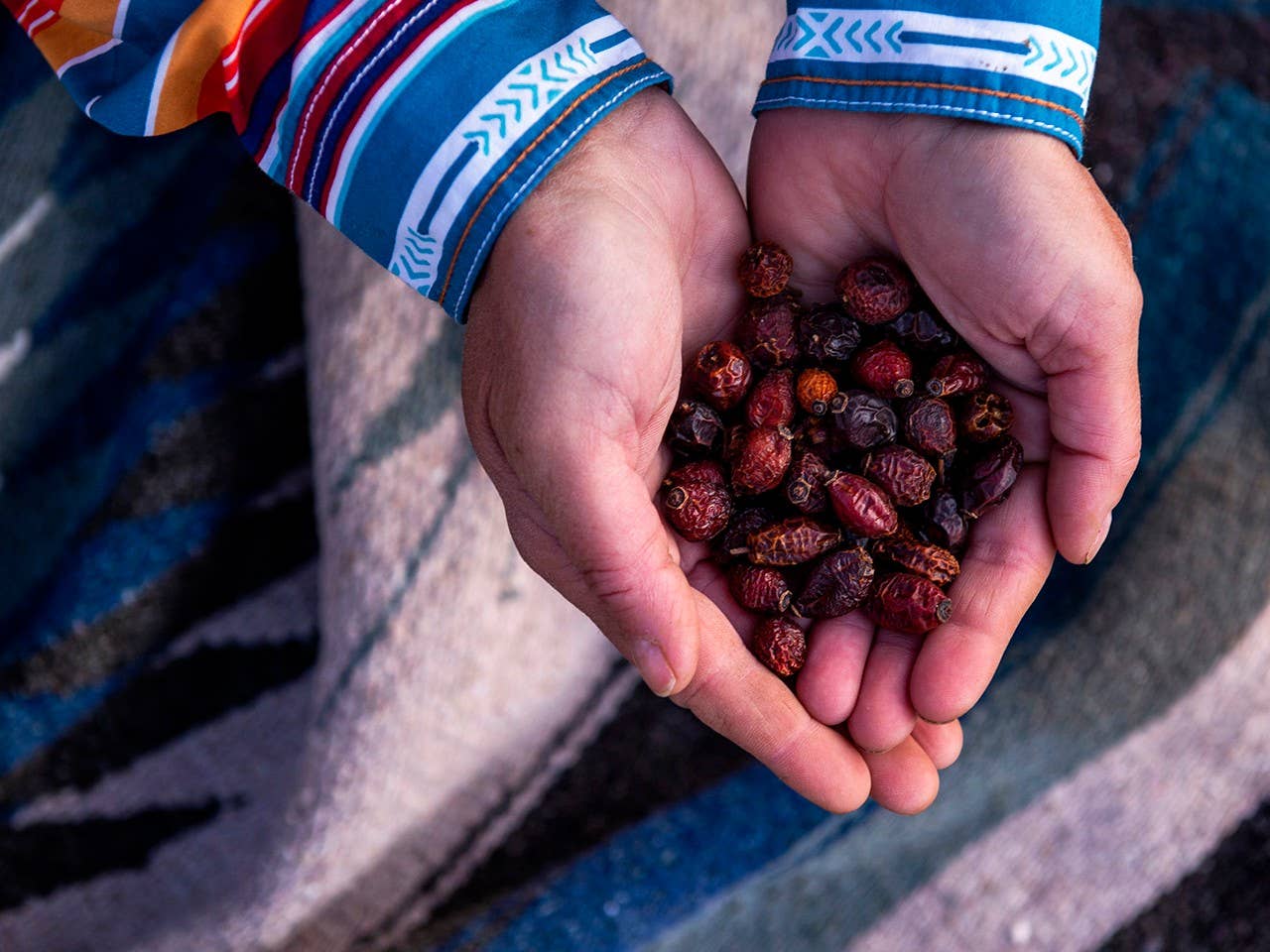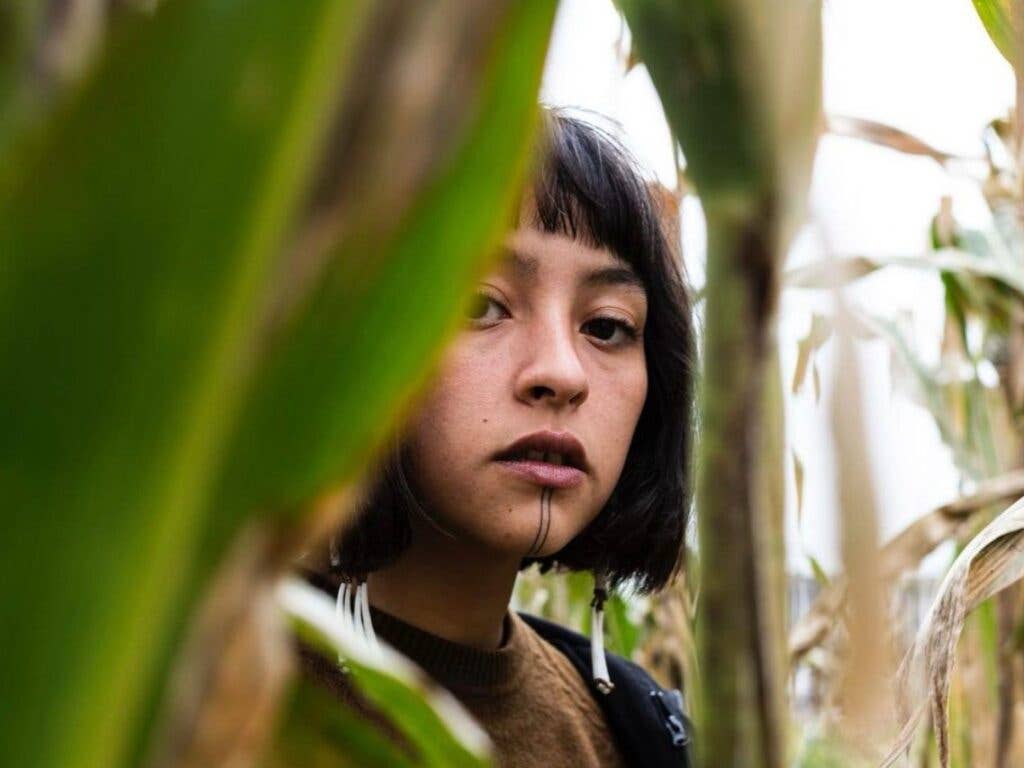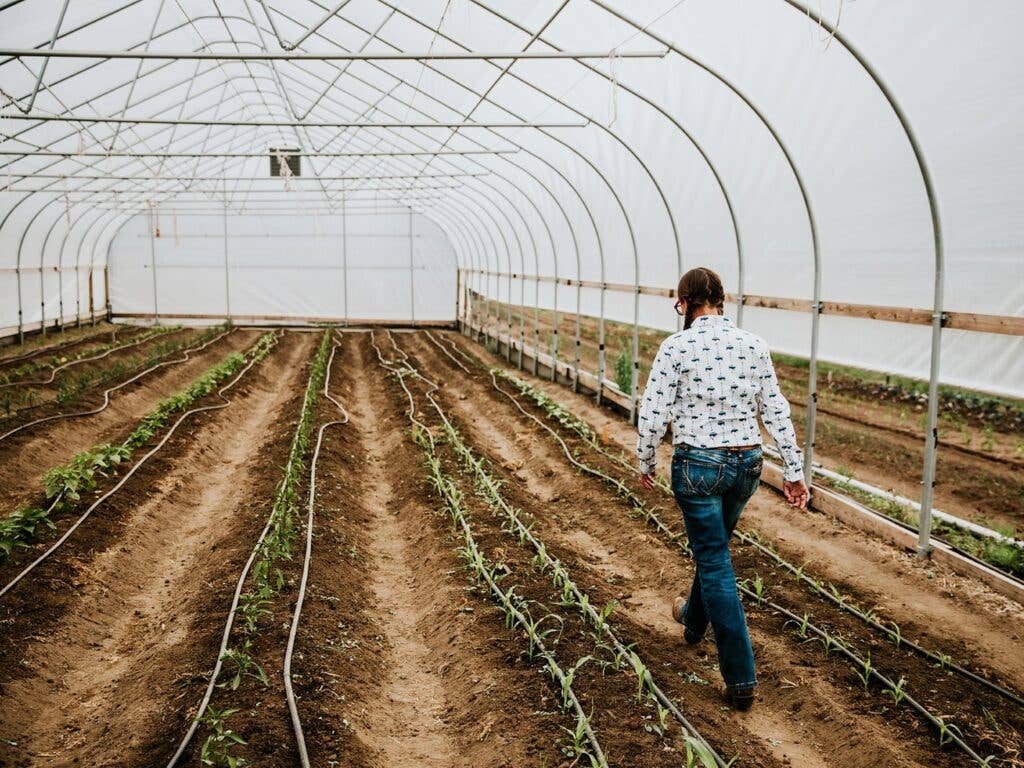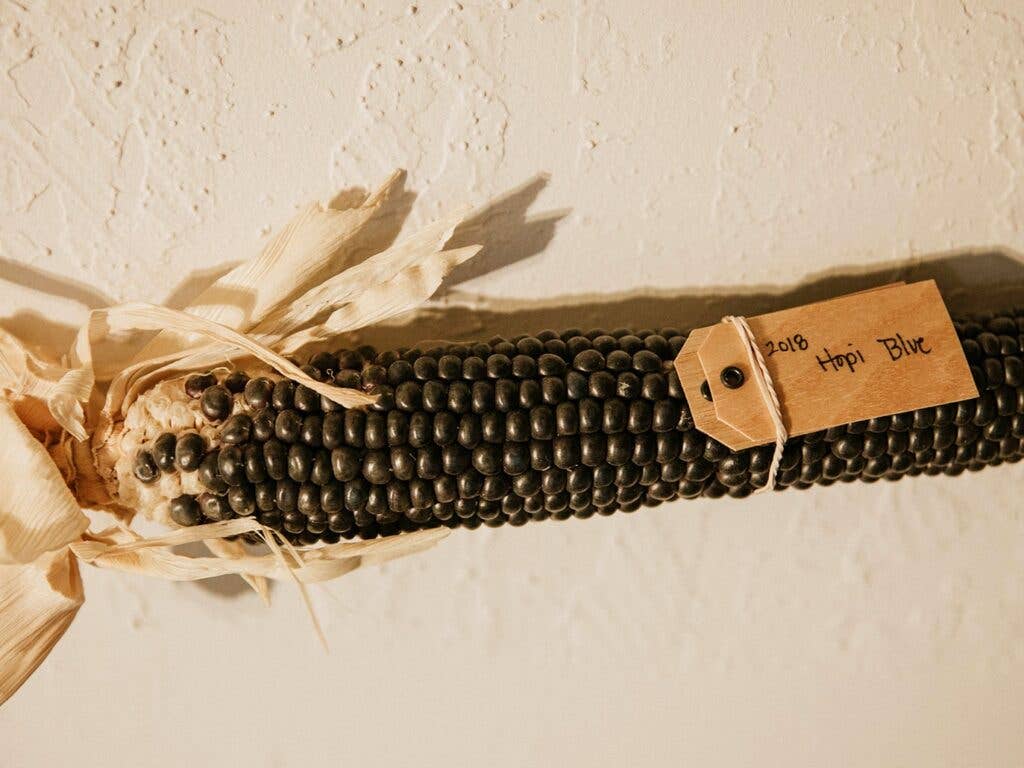
How Indigenous Women Are Sharing Culture Through Seed Rematriation
Seed sharing returns legacy crops to their original communities.
Food is more than what’s on the plate. This is Equal Portions, a series by editor-at-large Shane Mitchell, investigating bigger issues and activism in the food world, and how a few good eggs are working to make it better for everyone.
“Food is medicine,” says Jamie Stephens, an enrolled member of the Seneca-Cayuga Nation of Oklahoma.
“When I first returned to ceremony, I couldn’t find my medicines, didn’t know who to get them from,” she says, referring to her embrace of ritualized tribal healing practices that employ plants and herbs. “One of the easiest to forage is mullein, also called cowboy toilet paper, and even though not native, it’s everywhere on my land, and that’s when I started giving it away.”
Stephens now offers other seeds free for anyone who asks. “But sacred medicines like cedar, tobacco, sage, and sweetgrass go to Indigenous only.” Recently, the 42-year-old farmer drove nearly 700 miles from her family’s isolated cattle ranch in southern Missouri all the way to Minneapolis, toting 60 pounds of Jimmy Nardello, cayenne, poblano, and Anaheim peppers stuffed in a suitcase and cooler bag—the last of a bumper crop she harvested and threaded for her curing cabinets. On social media, Stephens boldly offered them in exchange for a reservation on a fully booked night at Owamni, chef Sean Sherman’s pre-settler pantry restaurant.
“Seed sharing is a verb,” says Kirsten Kirby-Shoote, an urban farmer and member of the Tlingit Nation who also organizes popup dinners in her adopted city of Detroit. “When we’re talking about rematriation, it means seeds coming home to the motherland. Those vaults? Seeds don’t generally feel welcome there."
Seed sharing is a different practice from seed banking, which could mean storing plant genetic material in a doomsday vault north of the Arctic Circle, or hoarding it at museums and universities—often kept from circulation long beyond viability, and occasionally taken without the permission of their traditional keepers in the name of scientific research. Sharing, on the other hand, bears personal responsibility for returning legacy crops to their original communities. This deeply intentional act of Indigenous food sovereignty is called rematriation. In recent years, the rematriation movement has coalesced into seed stewardship initiatives such as Dream of Wild Health, Sierra Seeds, and the Indigenous SeedKeepers Network.

“Seed sharing is a verb,” says Kirsten Kirby-Shoote, an urban farmer and member of the Tlingit Nation who also organizes popup dinners in her adopted city of Detroit. “When we’re talking about rematriation, it means seeds coming home to the motherland. Those vaults? Seeds don’t generally feel welcome there.”
Kirby-Shoote grew up observing her grandmother tending plants and sharing wisdom in her Gresham, Oregon garden. “Women are the knowledge keepers and champions of seed. Active sharing implies a continuity of the past, present, and future,” she says.
A seed mentor gifted Kirby-Shoote the same variety of White Eagle dent corn that Keetoowah people carried from Georgia to Oklahoma on Nv-no-hi dv-na-tlo-hi-lv, or the Trail Where They Cried. She is also tasked with growing and sharing Gete-Okosomin squash at Leilú Gardens.
“This year I grew half a city block of corn, beans, and squash—you know, the three sisters. And also a fourth sister, sunflower; a fifth sister, amaranth. Everyone wants to be included, even plants,” she laughs, referring to the method of mutually beneficial companion planting Indigenous farmers have practiced for millennia.
While her popup dinners have been on hiatus during the pandemic, Kirby-Shoote hopes to reboot next year, after moving into a new house she recently bought, with plans to plant another free U-pick plot in an adjacent lot. Her past dishes have featured foraged ingredients: walleye with hopniss, milkweed, ramps and ground cherries; duck breast with kombu-pickled blueberries and sunchokes puréed with fermented hazelnut "buttermilk.”
“It’s hard to have a seat at the table if none of your foods are cooked,” she says. So, along with other Indigenous chefs and food activists, Kirby-Shoote is a member of the I-Collective, which is working to establish better representation of Indigenous food narratives, including publishing a multimedia cookbook called A Gathering Basket.

“There can’t be just one seed keeper,” says Upingakraq Spring Alaska Schreiner, owner of Sakari Farms in Tumalo, Oregon, where she also acts as the principal ecologist of a cold-climate tribal seed exchange. “I’ll get six seeds, and it will take five years to get pounds of it to share. The role of rematriation is challenging.” An enrolled member of the Chugach Alaska Native Corporation and Valdez Native Tribe, Schreiner is of Inupiaq and German descent. She admits her mixed-race appearance has complicated gaining the trust to acquire seed high in ancestral value from elders. Her farm focuses on produce specific to a tribal diet and ceremonies—Hopi blue corn, Oneida cranberry beans, White Buffalo Calf Woman tobacco, azafrán (safflower), and yanabah (greenthread), used by the Diné in medicinal teas. She sends Fort Apache sunflower petals to chef Crystal Wahpepah’s restaurant in Oakland, California.
Schreiner's past two growing seasons have been marked by hailstorms, wildfires, and an extreme heat wave, making it even more difficult to farm in a Pacific Northwest high-desert region that has seen ongoing irrigation issues. Crop failure means fewer seeds to share, which is a setback to reversing seed insecurity. And yet, she has responded to hardship by donating pantry items to feed tribal elders and contributing crops to the local farm-to-school lunch program.

Schreiner also produces smoke-infused sea salts with piñon pine needles sourced from Northern Ute lands, as well as purple Buena Mulata pepper hot sauce. “We’re trying to modernize but stay ‘tradish,’” she says, referring to a return to traditional farming practices and growing cycles. “So if we’re out of something, you have to wait until it’s ready again.”
Speaking of peppers, those Jimmy Nardellos that Jamie Stephens transported from Missouri to Minnesota apparently did the trick. A table for four became available at Owamni, and her suitcase was emptied. Her party ordered smoked Lake Superior trout with tepary beans and bison with mustard green sauce. “The food tasted like medicine because of what that food is about,” she explains. At the end of the meal, along with a hefty tip, Stephens left behind a plastic Sonic cup stuffed with dried cedar, sage, mullein, and “Mohawk” tobacco for the waitstaff and cooks, in case there weren’t enough peppers to go around.
“I share kindness,” she says.
For more stories about Indigenous food sovereignty, watch the compelling new Gather film documentary.
Keep Reading
Continue to Next Story










